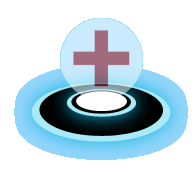







|
What is First Aid?
As suggested by the words, it is the first help given to a person in need of aid.
While treating a person in need of first aid, there are three primary objectives to keep in mind:
- Stop any life-threatening dangers.
- Keep the person safe from further harm.
- Get proper medical help for the person.
If you happen to come across a situation in need of medical assistance, use your best judgement to determine if you should call 911 or the local emergency number.
There's a big difference between someone who may have fallen off their bike at slow speeds versus someone who got hit by a car driving at 40 mph.
Let your values and knowledge of the risks guide your decision.
Before administering first aid, always try to obtain the person's consent or permission to provide your assistance.
People have the right to accept or refuse emergency care, so if they don't give you permission, don't try to treat them.
If the person is unconscious, disoriented, or is unable to knowingly grant consent, you can assume that it is OK to help out.
The Good Samaritan laws were developed to encourage people to help others in emergency situations and it will protect people when they provide assistance in good faith to save a life or prevent further injury.
In the event of an emergency situation follow these three steps: Check, Call, and Care.
- Prior to administering aid, survey (check) the scene and be on the lookout for other hazards and dangers in the area.
Stay calm and focus your attention on helping people while also thinking of your own safety and those of other rescuers.
- After surveying the scene and the people involved, call 911 or the local emergency number for help.
This is the most important action that you can take to help a person because it ensures that emergency medical help will be on its way.
The faster you notify them, the faster they will arrive on scene to provide assistance.
- When emergency services are notified, provide care to the person to the best of your ability.
Help keep the person safe and comfortable and monitor their conditions until medical services arrive on scene.
Continue to provide care until emergency services arrive to take over, if you become too exhausted to continue, or if the scene becomes unsafe.
When medical services do arrive, provide any information that you can give them.
What happens if you come across a situation that requires you to provide care before you are able to notify emergency services?
If that is the case, do your best to provide two minutes of care before calling 911 or the local emergency number and then continuing the treatment.
Situations where you may need to provide care first are often related to breathing emergencies whereas call first situations relate to cardiac emergencies.
If others are nearby, instruct them to contact emergency services while you provide care for the person.
This First Aid portal is broken down into six sections.
Go check them out!
|
|














